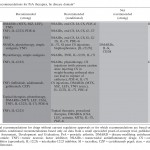As the need for specialists increases, the Rheumatology Fellowship Program at HHS seeks to grow the number of practicing rheumatologists. Program Director Anne Bass, MD, discusses the program’s ideas behind funding rheumatology fellowships and the challenges of attracting medical students to the field…




